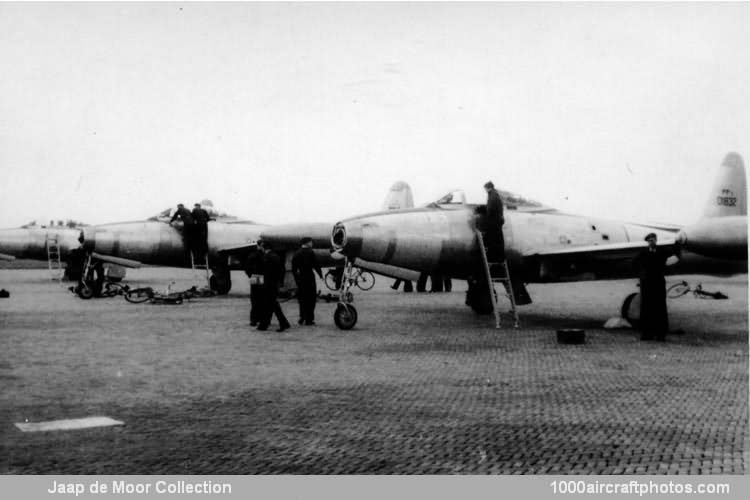09/30/2011. Remarks by Johan Visschedijk: "The Thunderjet lacked the agility for effectiveness in fighter-versus-fighter combat - although it was to serve in the escort role during early operational service in Korea - and development emphasis was accordingly placed on the enhancement of its fighter-bomber capabilities. The interim F-84D was succeeded by the F-84E, which, first flown on May 18, 1949, embodied major changes, including a stronger wing structure and a 12 in (30.5 cm) fuselage stretch.
The J35-A-17 engine was rated at 4,900 lb (2,223 kg) st, and provision made for attachment of JATO (Jet Assisted Take Off) rockets permitted an increase in take off weight. Internal fuel capacity was increased and two 230 gal (870 l) drop tanks could be carried on the bomb shackles under-wing. Built-in armament remained six 0.5 in (12.7 mm) guns and up to 4,500 lb (2,041 kg) of external ordnance could be carried.
The last of 843 F-84Es was completed in July 1951, under the MDAP (Mutual Defense Assistance Program) 100 of these being assigned to NATO air forces. The RNethAF received 21, of the remaining 79 most went to the French AF.
On March 15, 1951, the first four aircraft for the RNethAF arrived disassembled at Volkel AFB, where the first was flown on April 3, on July 28 these four were ceremonially handed over to the Dutch. The 21 aircraft were serialed K-1 to K-21, while they still wore their USAF serial, the one on the right, 50-1832, became K-1.
The F-84E was withdrawn by the Dutch from April 1956 on, the last F-84Es were phased out (from the Air National Guard) in mid-1959."
